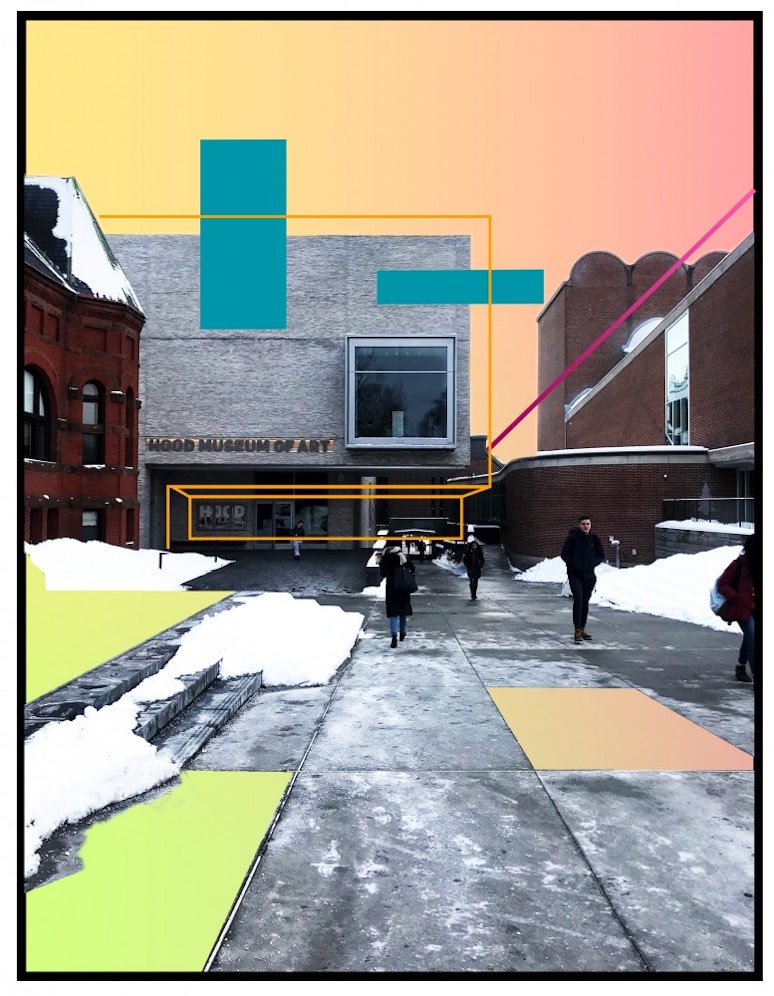
Last Saturday, the Hood Museum of Art reopened its doors. Before the Hood closed for renovations in the spring of 2016, the museum was working with and enriching classroom experiences across 35 academic departments and programs on campus. Now, with the addition of the Bernstein Center for Object Study, more gallery spaces and a spacious 2,500 square foot atrium (that remains open for students even after the closing), the Hood can extend its reach on campus and engage students across disciplines with the arts.
The reopening of the Hood marks a moment in Dartmouth’s history that has made art on campus more accessible than ever before. It is now more than equipped to reflect and act on its position as a museum at a teaching institution. The current momentum in the arts at Dartmouth, however, shouldn’t only be concentrated in a museum. Being so interdisciplinary, art should be more integrated into the student experience.
Art is meant to be shown, and the excitement generated by the Hood’s reopening is proof of the importance of art having a place on campus. What better way to more deeply integrate art into the student experience than to make the presence of student art ubiquitous on campus? Unfortunately, Dartmouth currently lacks sufficient spaces that showcase student art. The studio art department has student gallery exhibitions a few times a term that are curated by students, exploring interesting and thought-provoking themes. However, the student gallery is housed in the Black Family Visual Arts Center, making it less likely that students unaffiliated with the studio art department will stumble in.
Last term, Jamie Park ’20 curated an exhibition for The Booth, which converted out of service telephone booths in the Hopkins Center for the Arts into a new exhibition space for student artists. The Booth is a great stride for student art at Dartmouth, making it possible for students across campus to interact with the works of their peers in their day-to-day lives. In an article for The Dartmouth “New art exhibit ‘The Booth’ shines spotlight on student art,” Park noted that “there’s definitely less of a venue for students to show their artwork,” and current student artist on view Eric Wang ’20 said that the Hopkins Center for the Arts “isn’t very good about” showing student art.
The Hopkins Center for the Arts has a student visual art exhibition for senior studio art majors at the end of each spring term, and this exhibition stands out among others for the simple fact that this is one of the few times that students are able to see the works of their peers on display in a highly visible space on campus. It is not necessarily the lack of space that contributes to the lack of student art on display — it is the simple fact that Dartmouth has yet to see the opportunity in utilizing existing spaces to display student art. The Class of 1953 Commons, the Collis Center, the libraries and residential buildings all have wall spaces that could be transformed for students to showcase their work. Student art has the potential to resonate more with students who are less involved in the arts because of the immediacy of the artists as their peers.
The investment in the renovations for the Hood demonstrates the value that Dartmouth places on the presence of art at a teaching institution. It’s also clear that the College cares about its cultural standing amongst higher education institutions. There is equal value, though, in having a presence for student art on campus. For people who don’t make or see art in their day-to-day, being able to see the work of their peers will dismantle the often-held perspective that the visual arts can be unapproachable. It may encourage them to explore how art fits in with their lives or even take a studio art class. For student artists, the visibility of their work would be an invaluable opportunity that would expose them to the ways their work affects others and explore the path of being an artist beyond Dartmouth.
As Dartmouth expands its influence in the arts, it must also place more value in nurturing the artistic development of students outside of the formal setting of a museum. Supplemental course fees for studio art classes pose a barrier to both majors and non-majors alike. Other departments that have courses in which there are expenses for materials, such as the engineering department, often do not require additional fees. In order to persuade students that pursuing or even just trying out art, there should be fewer barriers that stand in the way of their creative development.
This is an exciting time for the arts at Dartmouth. The Hood will be enriching and invaluable in the academic development of Dartmouth students, and the events and programming that the museum will now be able to host will also provide exposure to the arts outside of academic settings. It’s time to take this momentum to spread the presence of art across campus. So much artwork is created every term, most of which gets stored away or dismantled. There is always room for more art to be shown — and it doesn’t need to be created by professionals or confined to a museum.
The editorial board consists of opinion staff columnists, the opinion editors, both executive editors and the editor-in-chief.

